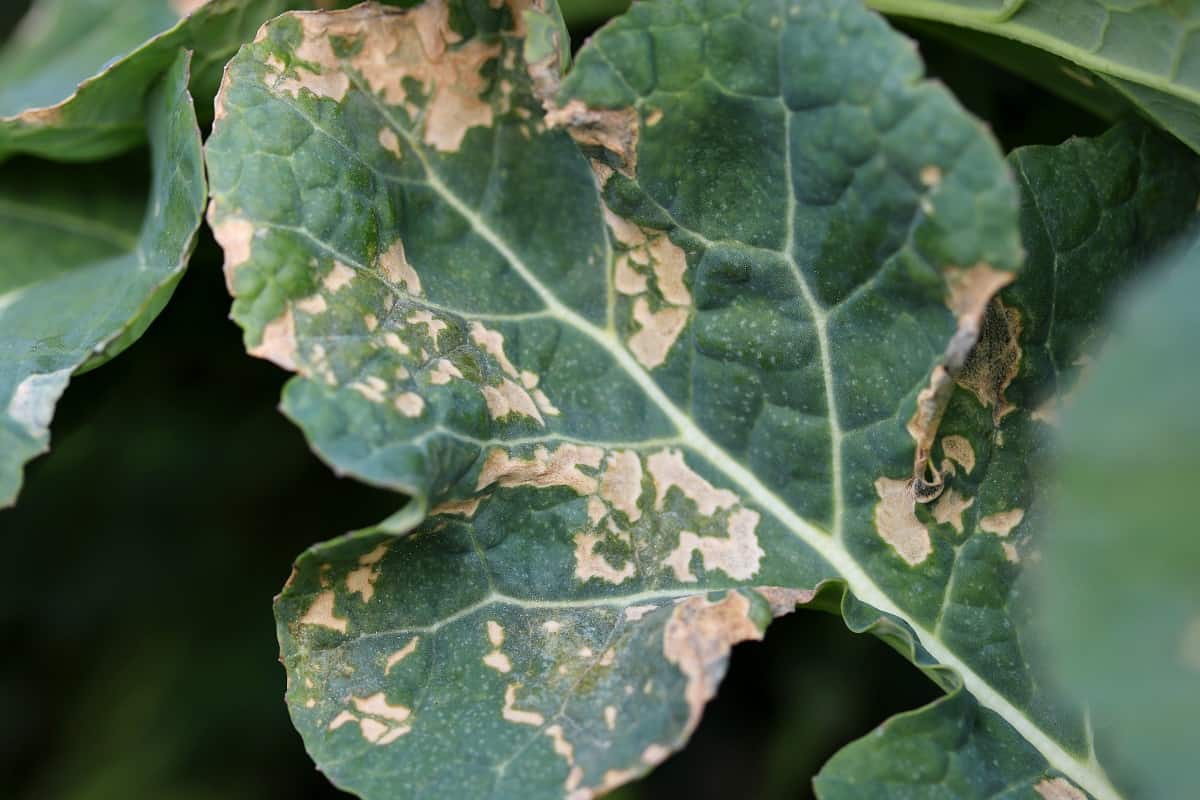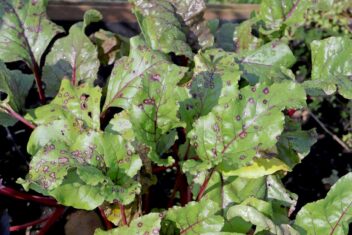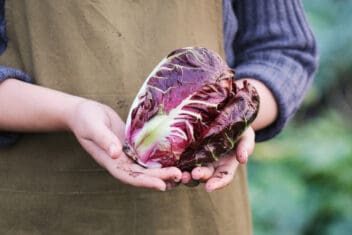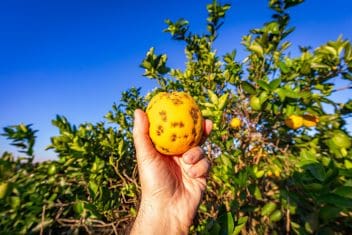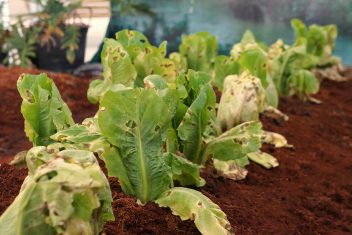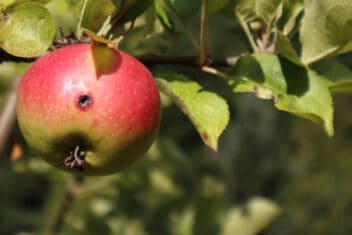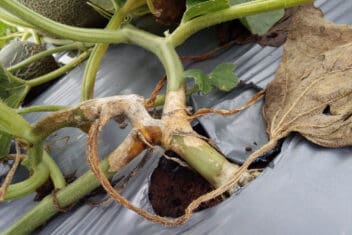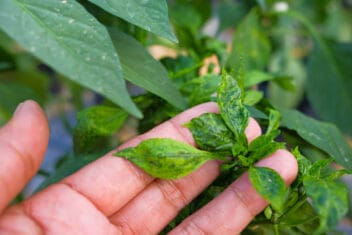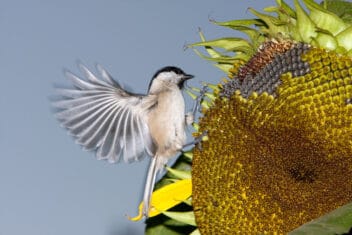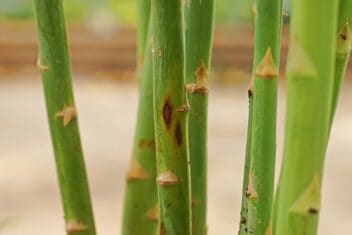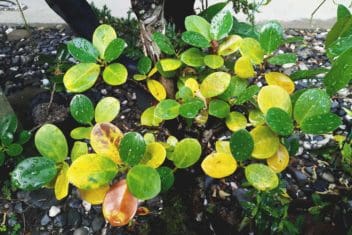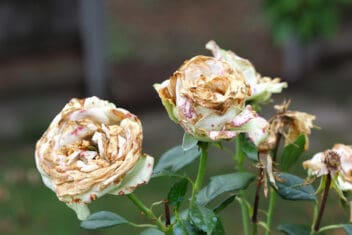Also known as Cercospora or Pseudocercosporella, there are two different types of fungi that can cause white leaf spot diseases on brassica plants. These diseases affect all plants in the brassica family, including kale, broccoli, cauliflower, collards, mustard, turnips, radishes, canola, rutabagas, horseradish, and more.
While some plants are more susceptible than others, it’s important to root out the potential culprits and causes of this disease.
It’s relatively easy to prevent and trickier to treat, so knowing ahead of time what kinds of threats these fungal pathogens pose is important.
A cool-weather disease, brassica white leaf spot is most likely to strike when temperatures are between 55-65°F.
Here are some tips to help you address brassica white leaf spot diseases among your plants.
Signs of an Infestation of Brassica White Leaf Spot
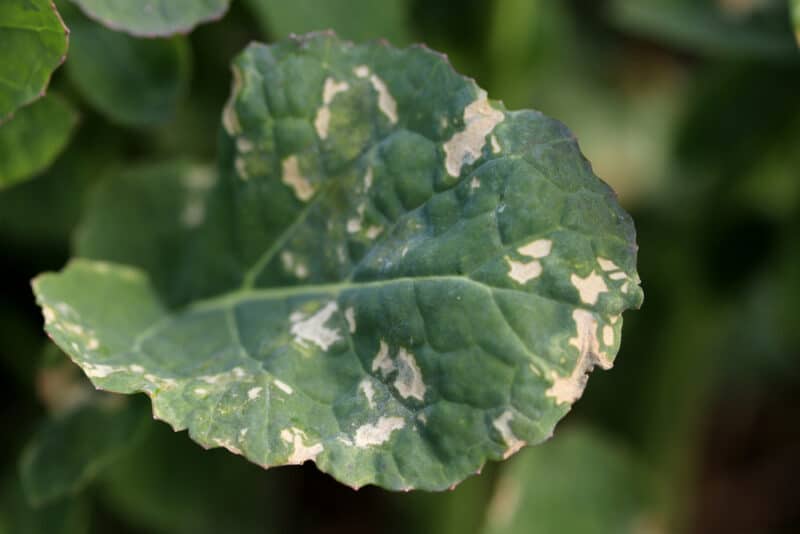
Several symptoms can indicate the presence of brassica white leaf spot disease among your plants. The most obvious, of course, are white spots.
The disease gets its name from the round white spots that appear on the stems, leaves, and pods of infected plants.
Some may develop darker borders with the centers eventually rotting and falling out. This might give your plant the appearance of having been shot with a shotgun.
In addition to the spots, many plants also develop yellowed leaves that become dry and brittle to the touch. These often wither up completely while remaining attached to the plants – a sight that’s quite peculiar to behold.
The lesions on the plants tend to be quite superficial. Often, they have distinct barriers between the tissues that are healthy and those that are diseased. These lesions begin brown and then turn white to ash-gray. Large numbers of darker specks can be mixed among the lesions, too.
On seed pods, the infestation starts as tiny brown spots which later expand and turn a gray to white color with darker spots inside.
Causes of Brassica White Leaf Spot
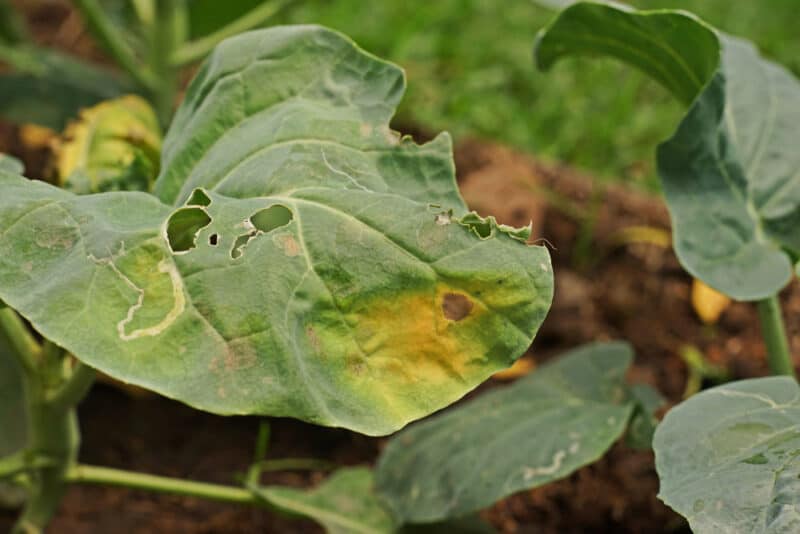
A fungal disease, brassica white leaf spot spreads much like many other fungal diseases.
It can strike without warning but is most common in plants that are spaced too closely together or in certain weather conditions.
For example, the wind can spread the spores of these fungi very long distances, especially in the fall.
This is when the conditions tend to be ripe for fungal spread – when the temperatures are cool and the weather is wet.
Although the fungal spores can spread virtually in any season of the year, you’ll likely find that the likelihood of spread is worsened in the fall.
That’s because rain during this time of the year can cause disease the next spring as the spores overwinter in volunteer crop plants or susceptible weeds.
In addition to overwintering in the soil in places where other brassicas were grown, brassica white leaf spot can also be harbored on plants like wild radish, wild mustard, and even shepherd’s purse.
How to Prevent Brassica White Leaf Spot
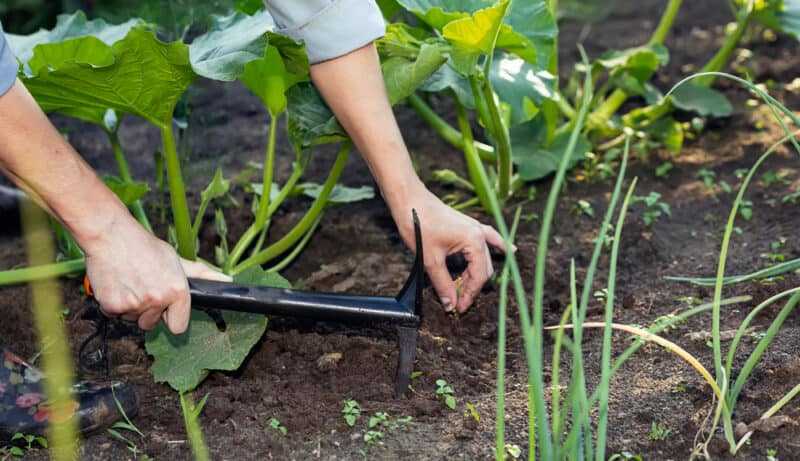
There are a few ways you can prevent brassica white leaf spot diseases in your garden. Here are some of the best methods to try.
1. Remove Weeds and Plant Debris
The first step you should take is to remove all weeds and other types of plant debris from your garden.
While it’s virtually impossible to have a garden that is 100% weed-free, do your best to promote a garden that’s clean and tidy.
Brassica white leaf spot can overwinter both on brassicas as well as on a variety of susceptible weeds. Get rid of any of these plants in your garden, particularly those that are growing near your brassicas.
Also, get rid of plant debris at the end of the growing season. It’s tempting to leave plants and plant parts in the garden to rot.
This isn’t always a bad thing, either, as decaying plants provide a valuable source of nutrients (particularly nitrogen) to replenish the depleted soil at the end of the growing season.
However, they can also harbor fungal spores, so it’s better to be safe than sorry.
Remove plant debris or plow it deeply into the soil if you want to be able to harness the nutrients as the plants decompose.
2. Rotate Crops
Crop rotation is a good practice to get into regardless of whether you’re dealing with any disease. However, if brassica white leaf spot is an issue, then rotating your crops is essential.
If you planted broccoli in the garden in one spot, don’t plant broccoli or other brassicas in that same spot for at least 3 years. It’s safe during the fourth year or later.
Rotating your crops is a great way to protect against this disease as well as many other diseases and pests that can affect your plants.
3. Promote Good Drainage and Aeration

Brassica white leaf spot, like many fungal diseases, is far more common in gardens that suffer from poor drainage and aeration. Your plants need room to breathe, so give it to them!
Make sure your soil is well-draining. The best soil type for growing plants is that which is light, fertile, and loamy. If your soil consists of heavy clay, add compost and other amendments until it has the proper structure.
You also need to maintain proper spacing between plants.
There’s something to be said about planting densely (it can help reduce weed competition, for example).
However, crowding your plants will dramatically increase the likelihood of fungal disease.
When you water, try to do so from below with drip irrigation lines instead of overhead sprinklers.
This will promote faster drying and reduce the likelihood of foliage getting wet. That is a situation that can increase the spread of various fungal diseases.
4. Clean Gardening Equipment
One final tip to prevent this disease is to keep everything – including yourself and your garden – as neat as possible. Sterilize all garden equipment with a 10% bleach solution. This should be done after working with infected plants as well as between individual cuts. You also have to wash your hands after working with or inspecting contaminated plants.
How to Get Rid of This Fungus
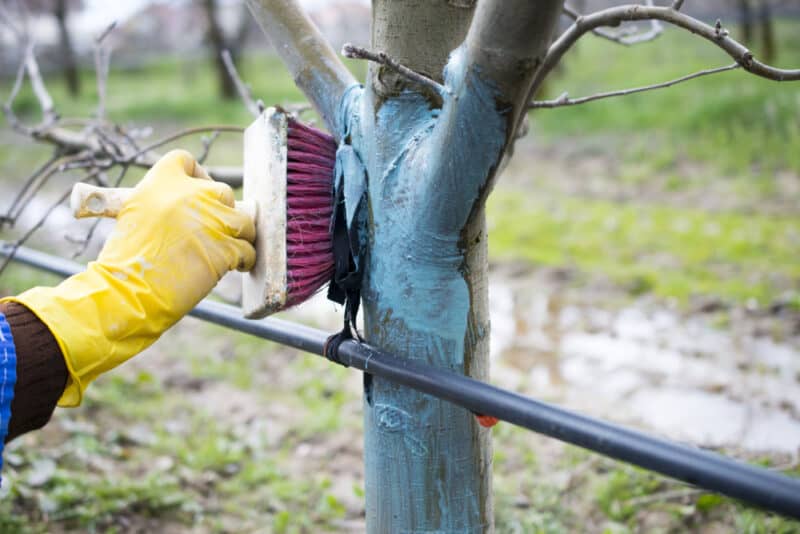
The best way to get rid of brassica white leaf spot is to prevent it. However, this troubling fungal disease can also be eliminated if you happen to notice it later on. The key to being successful in your treatment is in acting as quickly as possible.
As soon as you notice any signs or symptoms of this disease, spray with a copper fungicide.
This should be applied to the bottoms and tops of leaves. It will need to be re-applied once every 7-10 days until the disease is gone.
Benlate is one good product to consider, but it’s important to note that this chemical can be toxic to some cruciferous vegetables (such as cabbage).
Therefore, it may make sense for you to check in with your local cooperative extension about which treatments are recommended in your area.
Will Brassica White Leaf Spot Kill My Plants?
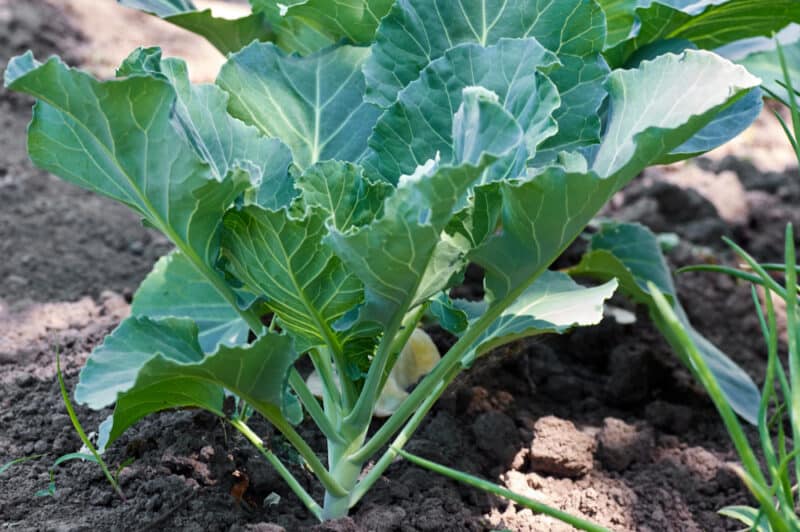
The one unique feature of brassica white leaf spot is that, while it can affect all cruciferous plants, it doesn’t affect them all equally.
Kale, cauliflower, broccoli, and collards tend to be the least affected by the disease. Other brassicas seem to be hit harder. Canola, for instance, is extremely vulnerable.
Whether your plant will survive or not depends largely on its overall health before it became infected.
White leaf spot causes chlorophyll production to decrease as the green areas on the plants disappear. Soon after, the leaves turn yellow and die.
If your plant is healthy and older, it can usually survive the loss of leaves. However, if this disease threatens seedlings, it can seriously deform them or even kill them outright.
Therefore, it’s important to act fast if you notice this fungal disease in your garden. This is true especially if it’s early in the growing season.
With the right preventative care, it can usually be eliminated.
